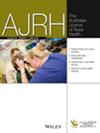Rural Workforce Drought: Spatial Analysis Reveals Persistent Maldistribution of the Australian Occupational Therapy Workforce From 2013 to 2021
Abstract
Objective
Describe Australian occupational therapy (OT) workforce distribution trends by total numbers, demographics, work type, and job roles across remoteness levels.
Design
Exploratory spatial analysis of workforce distribution compared to total populations between 2013 and 2021.
Setting
Australia.
Participants
OTs participating in registration surveys (2013–2021) and Australians from the 2011, 2016, and 2021 National censuses.
Main Outcome Measures
Proportion of occupational therapists, hours worked, First Nations inclusion, leadership roles, and practice areas across Modified Monash Model (MMM) levels of remoteness compared to populations.
Results
Despite a 72% national workforce increase (over 10 000 OTs) over nine-years, metropolitan areas consistently retained a disproportionate share of workforce, hours worked, specialised practice areas, leadership roles, and First Nations identifying therapists. Regional centres showed the highest growth but would require similar growth for 4–15 years to equal metropolitan ratios, while workforce gaps will likely widen for other remoteness levels. Private sector hours increased substantially by 100-h/10 000 population, while public sector hours increased by just 1-h. However, private sector growth did not extend equitably to rural and remote places. Metropolitan, regional, and large rural towns outpaced all other remoteness levels in leadership growth suggesting a centralising tendency. At current rates, representative First Nations proportions will not be achieved. Equity against 2021 numbers requires redistribution of at least 1717 therapists, 278 formalised leadership positions, and increased specialised services to rural and remote places. At least 598 additional First Nations identifying therapists are needed nationally, of which 406 (68%) are needed in regional, rural, and remote places.
Conclusion
Persistent maldistribution of the OT workforce across remoteness levels reflects structural inequities unlikely to resolve through organic growth. Current rural workforce strategies appear insufficient to address geographic and cultural disparities. Targeted investment in rural workforce development, including incentives and pipeline models are likely required to support equitable availability of OT services.

 求助内容:
求助内容: 应助结果提醒方式:
应助结果提醒方式:


